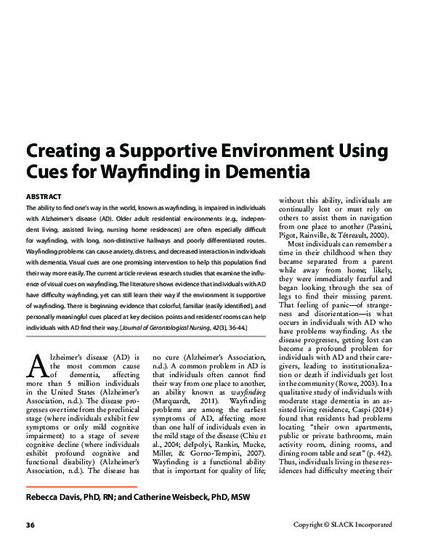
Article
Creating a Supportive Envirorment Using Cues for Wayfinding in Dementia.pdf
Journal of Gerontological Nursing
(2016)
Abstract
The ability to find one's way in the world, known as wayfinding, is impaired in individuals with Alzheimer's disease (AD). Older adult residential environments (e.g., independent living, assisted living, nursing home residences) are often especially difficult for wayfinding, with long, non-distinctive hallways and poorly differentiated routes. Wayfinding problems can cause anxiety, distress, and decreased interaction in individuals with dementia. Visual cues are one promising intervention to help this population find their way more easily. The current article reviews research studies that examine the influence of visual cues on wayfinding. The literature shows evidence that individuals with AD have difficulty wayfinding, yet can still learn their way if the environment is supportive of wayfinding. There is beginning evidence that colorful, familiar (easily identified), and personally meaningful cues placed at key decision points and residents' rooms can help individuals with AD find their way. [Journal of Gerontological Nursing, 42(3), 36–44.]
Disciplines
Publication Date
2016
DOI
https://doi.org/10.3928/00989134-20160212-07
Citation Information
Rebecca Davis. "Creating a Supportive Envirorment Using Cues for Wayfinding in Dementia.pdf" Journal of Gerontological Nursing (2016) Available at: http://works.bepress.com/rebecca-l-davis/5/
